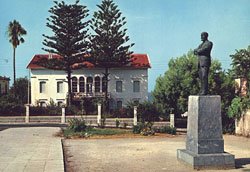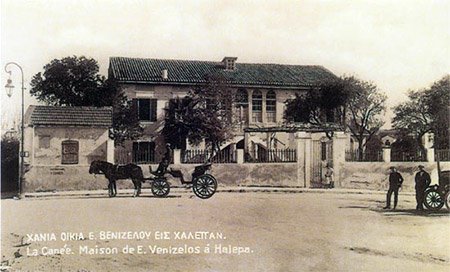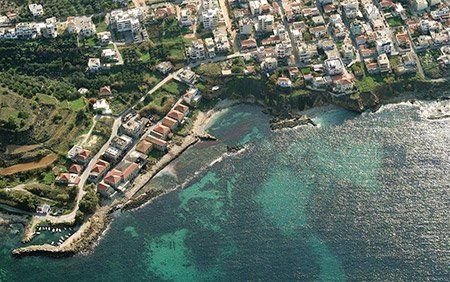Chalepa: an alluring suburb with a long and diverse history

Chalepa (Halepa) is an attractive suburb in Chania, one of the most distinctive and historical parts of the city.
Once upon a time, Chalepa was considered the bourgeois neighborhood of Chania, where the noble class, diplomats and people with a certain commission or post used to live.
Chalepa was indeed referred to as the cosmopolitan and noble district of Chania, however it was a quite diverse place, as many workers, tanners and curriers used to work at the least popular and fancy parts of the area known as Tabakaria.
Chalepa features a long and rich history dating back to the Turkish occupation era. At that time, due to the overgrowth of population within the fortress of Chania, many noble families decided to move their permanent residency to another area. They bought huge pieces of land from the Turks and they started building their mansions in Chalepa, while poor people occupied the Tabakaria area.
Many famous and celebrated personalities, artists and politicians were born or lived in this district; some of them are the ex-Prime Ministers Eleftherios Venizelos, Konstantinos Mitsotakis and many more. The residence of Venizelos and the house of the first governor of Crete are among the main landmarks and attractions in Chalepa till today.
Chalepa in the Past and Present

According to the former mayor of Chania, Yannis Klonizakis, Chalepa still rewards the visitors with its numerous interesting and important venues, such as the consular buildings and the mansions; the area, though, has been bearing a false reputation as a place where rich people resided, but the truth is far different; the majority of people living there were not wealthy.
The area was practically divided into two different parts; the one was full of nice and imposing buildings and upper class residents, while the other, towards Pyrgos, was poor, home to underprivileged people who lacked sufficient means to live.
Mr. Klonizakis indicates that some people didn’t even have water at that time but neighbors used to gather and help each other in the darkest hours. There was a sense of community and care that doesn’t exist anymore, due to the large buildings and the concentration of many people in apartment blocks.
The neighborhood was sparsely populated; people had pieces of land and animals and were trying to use them in order to survive. Simple people with big hearts used to live in these poorest parts of the district; people who would show their support practically and emotionally whenever they could, people who would participate in every celebration but also in every painful moment, sympathizing with the sufferer. These people had no cars and used their mules and donkeys to commute.

The leather processing stores in the area were plentiful and gave the tone to the district. Today, the district is full of people, large buildings, anonymity and introversion. People are not the same anymore, according to Mr Klonizakis; communities are now trying to organize some open festivals and celebrations, or public meals in order to bring neighbors closer, giving them the chance to meet each other, but due to modern rhythms of life, it is not easy to do.
Many of the mansions were abandoned during the 80s and several modern buildings replaced the small houses, somehow alternating the looks of area. Chalepa is, though, considered until today one of the most picturesque districts of Chania, a place where tradition and modern elements blend harmoniously creating a unique and charming ambience.
- Changes in Chalepa, description of the many changes in Chalepa by a resident of the suburb
- Chalepa District in Chania, more information and panoramic image